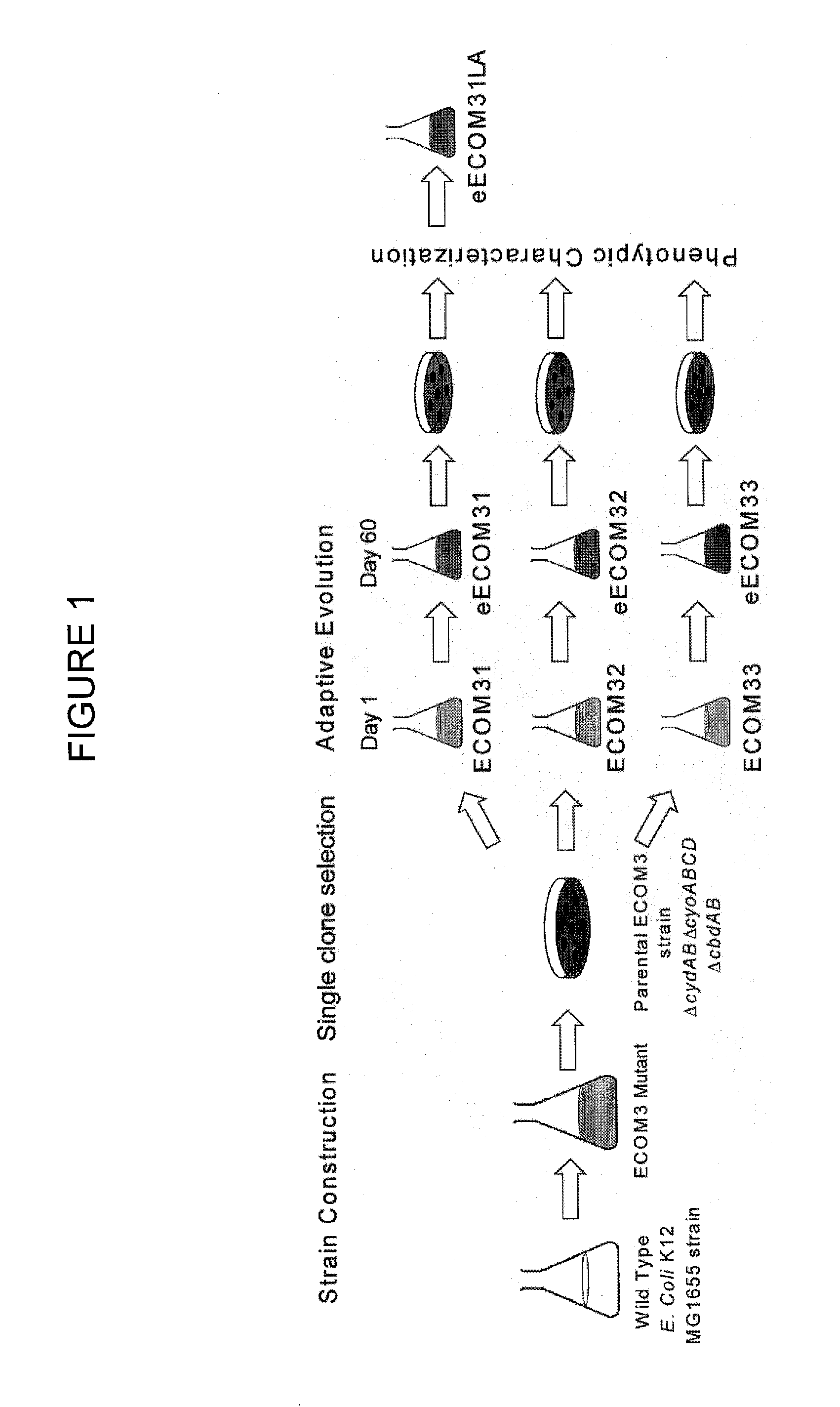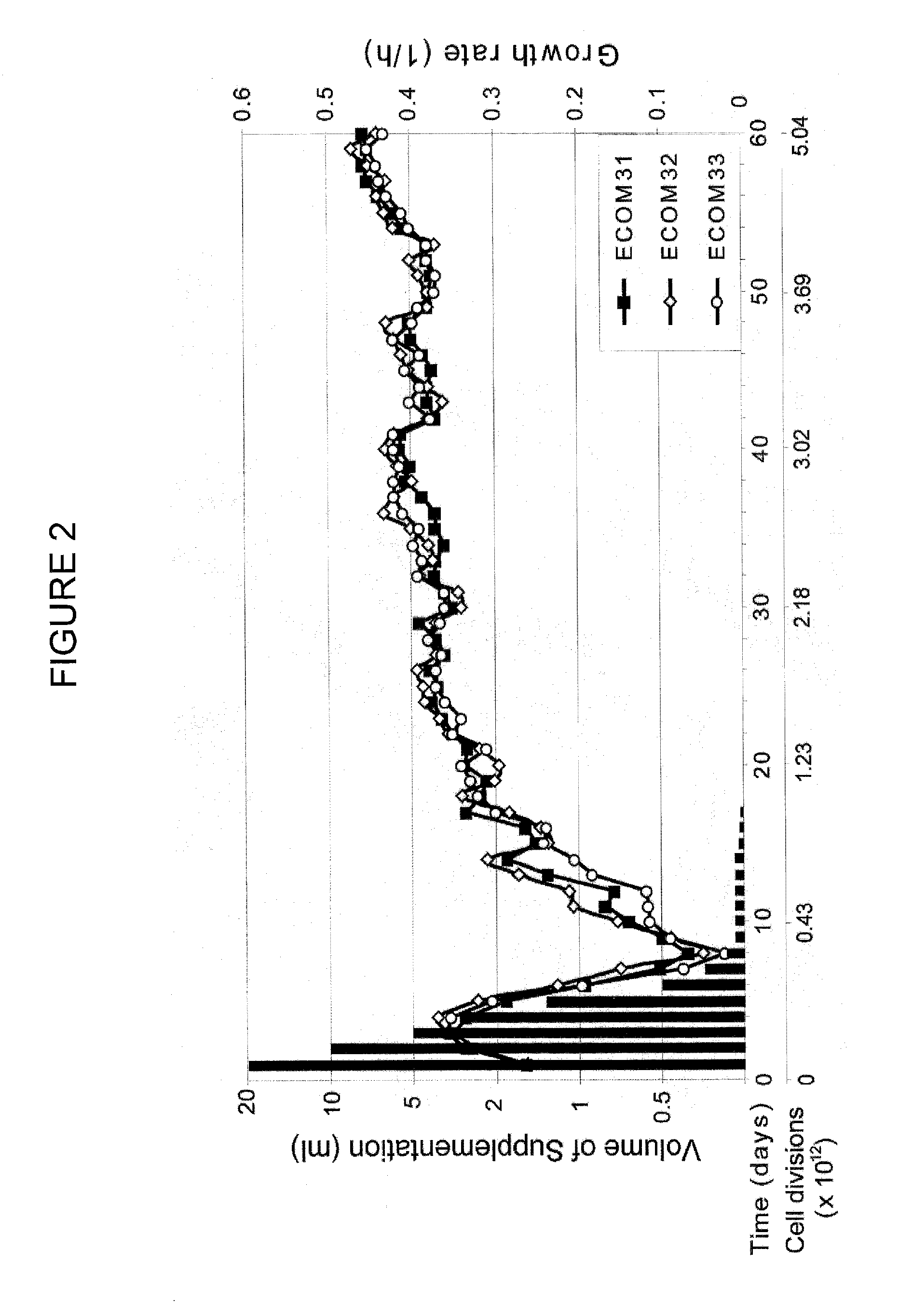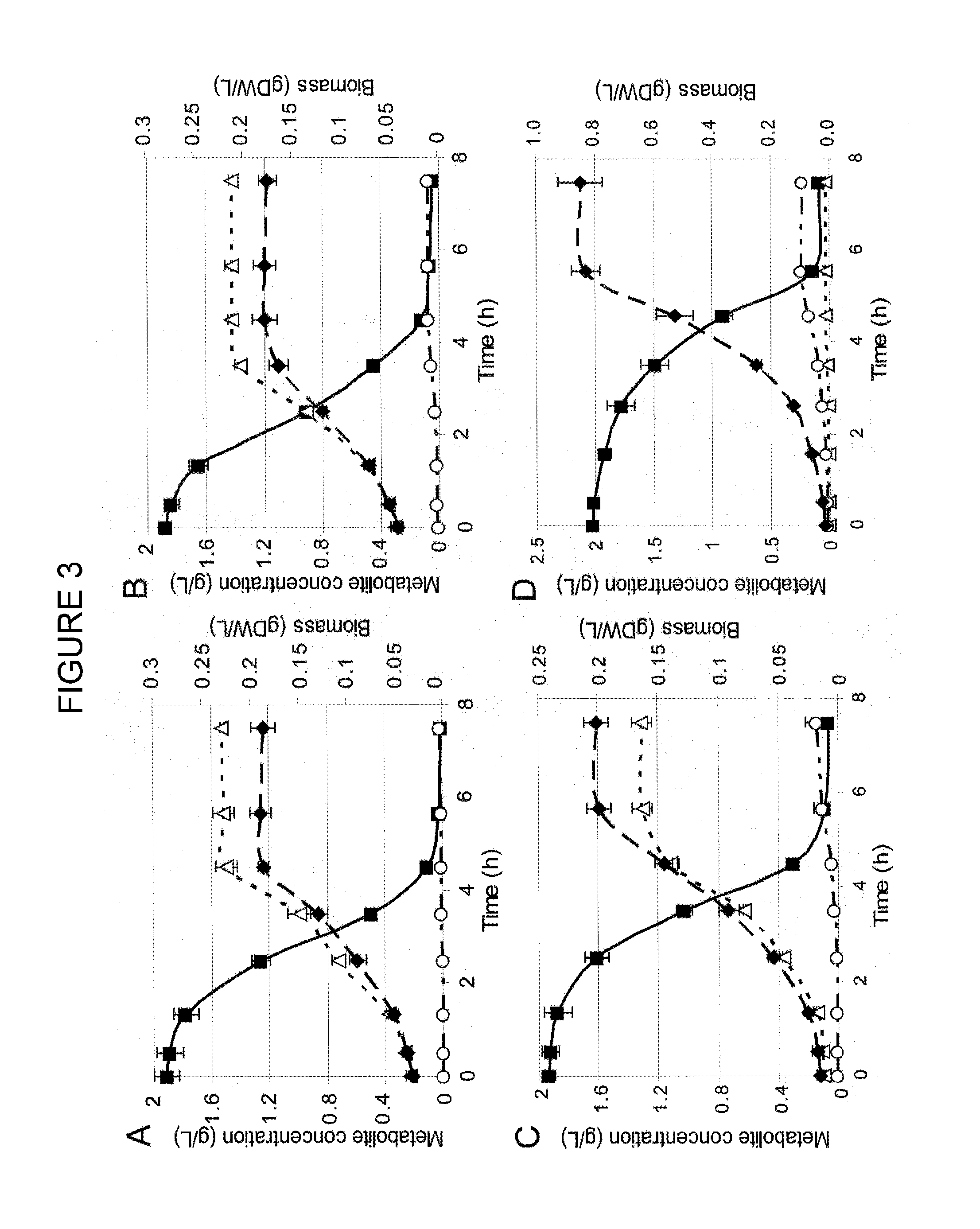Escherichia coli metabolic engineering oxygen independent platform strains and methods of use thereof
a technology of metabolic engineering and oxygen independent platform, which is applied in the field of transgenic escherichia coli cells, can solve the problems of no secretion analysis or other physiological characterization, and achieve the effects of reducing mixing, reducing oxygen uptake, and being convenient to maintain
- Summary
- Abstract
- Description
- Claims
- Application Information
AI Technical Summary
Benefits of technology
Problems solved by technology
Method used
Image
Examples
example 1
[0075]Fermentation of glucose to D-lactic acid under aerobic growth condition by an evolved E. coli mutant deficient in three terminal oxidases is reported in this work. Cytochrome oxidases (cydAB, cyoABCD, cbdAB) were removed from the E. coli K12 MG1655 genome resulting in the ECOM3 (E. coli Cytochrome Oxidase Mutant) strain. Removal of cytochrome oxidases reduced the oxygen uptake rate of the knock-out strain by nearly 85%. Moreover, the knock-out strain was initially incapable of growing on M9 minimal media. After subjecting the ECOM3 strain to adaptive evolution on glucose M9 medium for 60 days, the growth rate equivalent to anaerobic wild type E. coli was achieved. Our findings demonstrate that three independently adaptively evolved ECOM3 populations acquired different phenotypes: one produced lactate as a sole fermentation product while the other two strains exhibited a mixed acid fermentation under oxic growth conditions with lactate remaining as the major product. The homofe...
example 2
Materials and Methods Used for Generation of Example 1 Data
[0081]Strains and Media: E. coli K12 MG1655 (ATCC: 700926), obtained from the American Type Culture Collection (Manassas, Va.), was used as a parent strain for all gene deletions in this work. During the gene deletion process the strains were cultured on Luria-Bertani medium supplemented with 50 μg / ml kanamycin and 100 μg / ml ampicillin when necessary. Evolution and phenotype assessments of the mutant strain were carried out using M9 minimal media (26) with glucose (2 g / l) as the carbon source containing Na2HPO4. 7H2O (6.8 g), KH2PO4 (3 g), NaCl (0.5 g), NH4Cl (1 g), MgSO4 (2 mM), and CaCl2 (0.1 mM) and trace elements (15). During the early stage of adaptive evolution minimal media was additionally supplemented with EZ supplements (Technova) containing the mixture of L-amino acids at following concentrations (numbers indicate milimolarity): Ala (0.8), Arg (5.2), Asn (0.4), Asp (0.4), Cys (0.1), Glu (0.6), Gln (0.6), Gly (0.8)...
example 3
Results of Examples 1 and 2
Strain Construction and Growth Adaptation
[0088]In an effort to develop an E. coli strain that would exhibit the similar phenotypic behavior under both oxic and anoxic culture conditions, we constructed a triple mutant of wild-type E. coli K-12 MG1655 strain (ECOM3 or E. coli Cytochrome Oxidase Mutant) that had the genes coding for the cytochrome oxidase bd (cydAB, b0733-b0734), cytochrome oxidase bo (cyoABCD, b0432-b0429) and putative cytochrome oxidase (cbdAB, b0979-b0978) completely removed from the genome. The cbd locus is annotated as a putative cytochrome oxidase and studies indicate that its gene products do not faun a fully functional terminal oxidase (5, 29). Deletions of terminal cytochrome oxidases, encoded by the cydAB (cytochrome bd complex), cyoABCD (cytochrome bo complex), and cbdAB (also known as appBC) operons, have been previously reported in E. coli (8, 19, 24, 25, 29).
Initial Phenotypic Characterization and Adaptive Evolution
[0089]The re...
PUM
| Property | Measurement | Unit |
|---|---|---|
| Volume | aaaaa | aaaaa |
| Fraction | aaaaa | aaaaa |
| Fraction | aaaaa | aaaaa |
Abstract
Description
Claims
Application Information
 Login to View More
Login to View More - R&D
- Intellectual Property
- Life Sciences
- Materials
- Tech Scout
- Unparalleled Data Quality
- Higher Quality Content
- 60% Fewer Hallucinations
Browse by: Latest US Patents, China's latest patents, Technical Efficacy Thesaurus, Application Domain, Technology Topic, Popular Technical Reports.
© 2025 PatSnap. All rights reserved.Legal|Privacy policy|Modern Slavery Act Transparency Statement|Sitemap|About US| Contact US: help@patsnap.com



